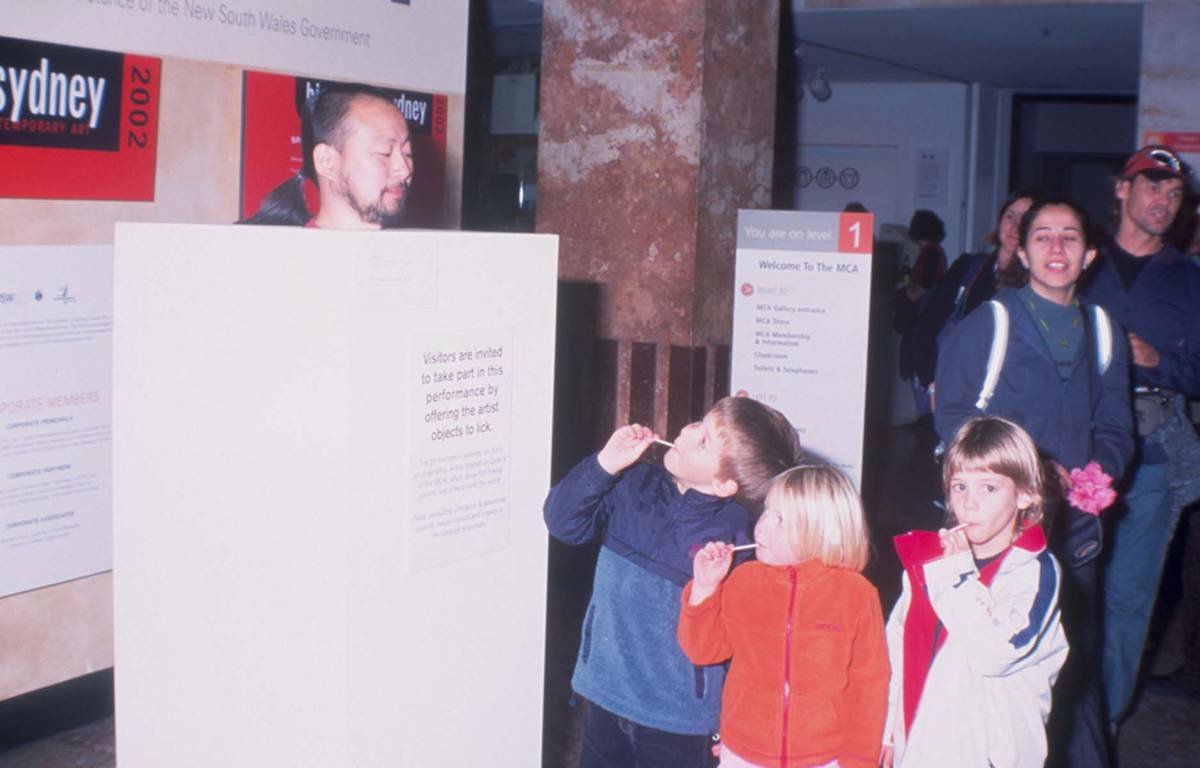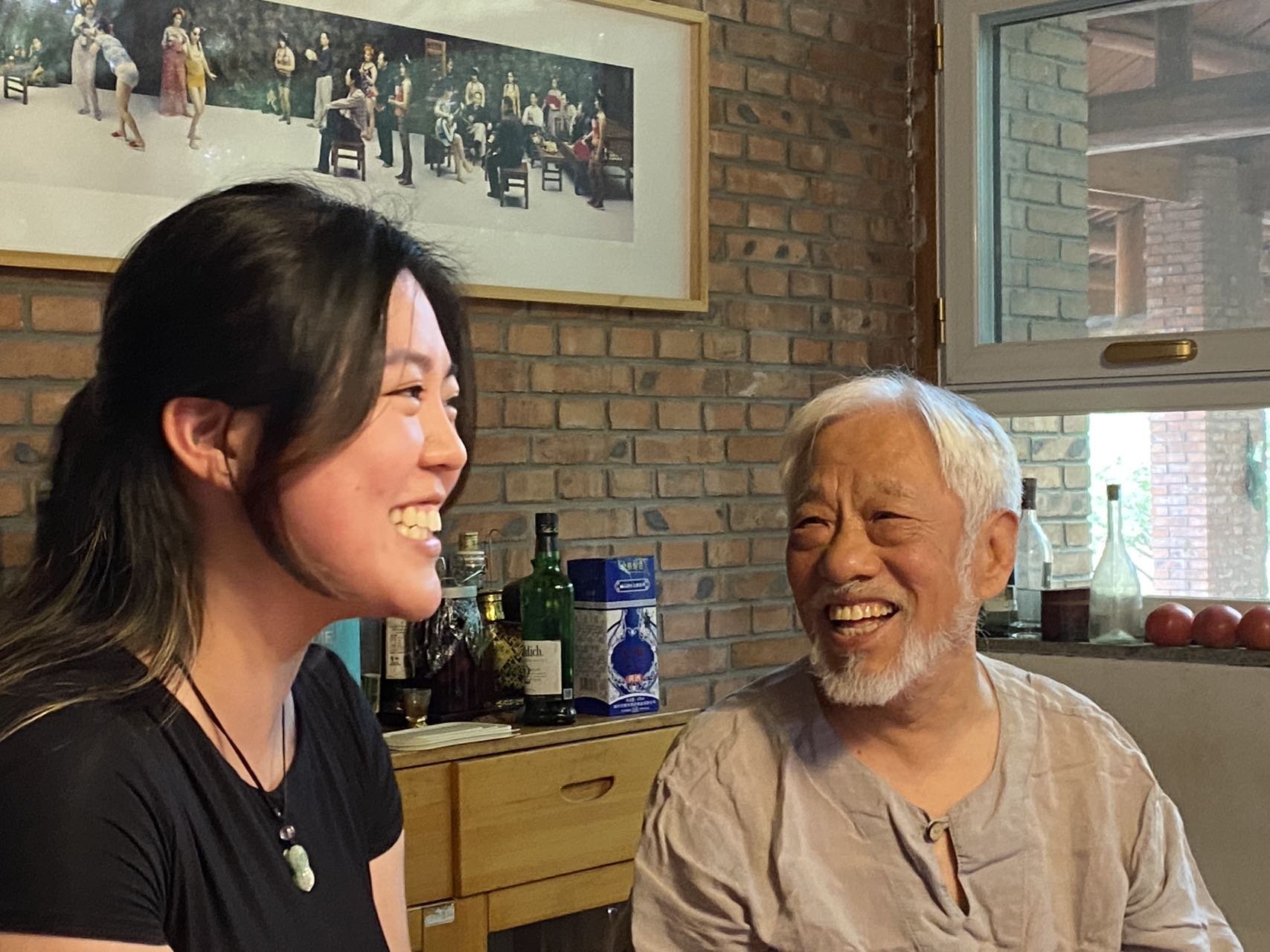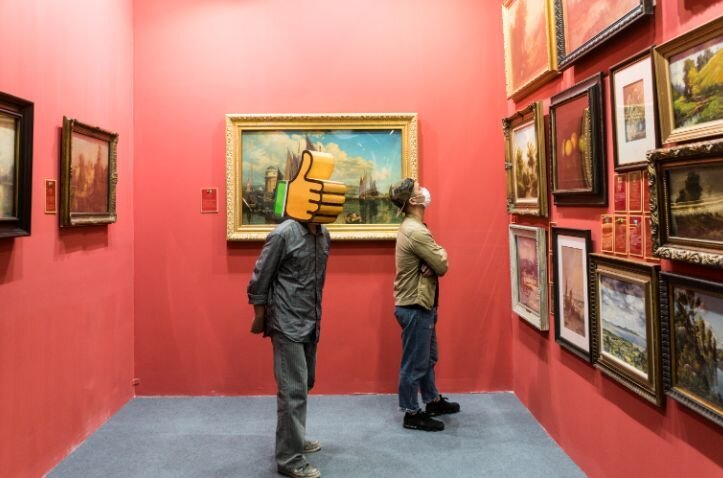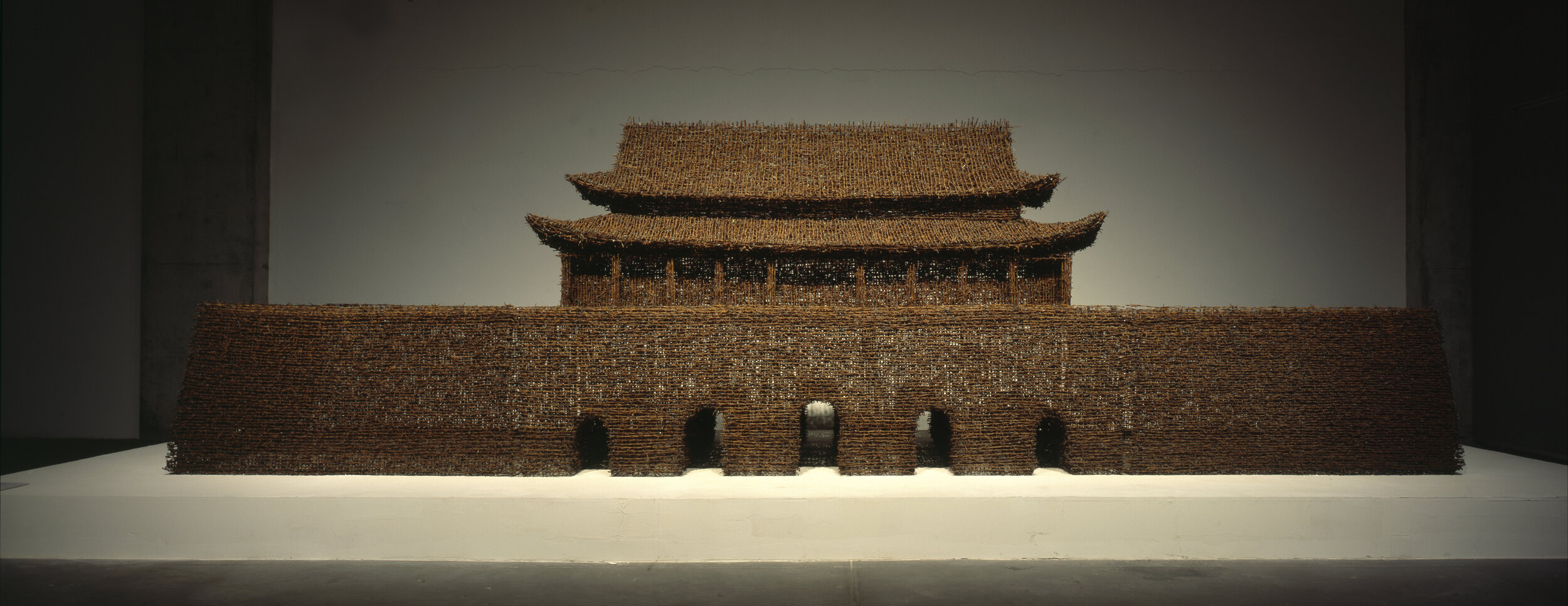Journal
Tags
- Alice Ho
- Bowen Yang
- Celsivincys Kumar
- darren jorgensen
- Darren Jorgensen and Tami Xiang
- Debbie Gilchrist
- Eloise Viney
- Erika Johanson
- Felicity Ostergaard
- Harry Price
- James Enderby
- Jemma Yovacic
- Jessica Cottam
- Jiayang Qin
- Jinx Zhou
- Johan Sulaiman
- Kiara Player
- Kye Fisher
- Lucy Leech
- Lévi McLean
- Maddie Sarich
- Peter Kidson
- Rachel Ciesla
- Sam Beard
- Sam Beard
- Sara Fong
- Tami Xiang
- Valentina Sartori
Qi Zhilong in his studio, 2024. Photo by Kye Fisher
Li Xianting remarked of his role as an editor and a critic as follows:
“I just wanted to draw people’s attention towards a certain issue. I wanted to stir debate and stoke discourse”
Guan Kan 观看 attempts to stand in this tradition, and uphold Mr Li’s dedication to critical investigation on Contemporary Chinese Art. Below you will find a series of essays, criticism, interviews with artists, art theory and art writing, aimed at analyzing the history and future of art.
Scholarly debate and analysis is welcomed by the journal as well as negotiating intercultural differences which may arise.
To join this discussion, please get in contact with Guan Kan 观看

Accelerationism and Positive Thinking after Beijing Realism
Two years after the close of the Beijing Realism Exhibition, the storm of furious writing it cased still leaves many questions unanswered. The co-curators of the exhibition and co-authors of this paper, Darren Jorgensen and Tami Xiang, attempt to shed new light on Beijing Realism as a reaction to economic conditions

He Chengyao and Chen Qingqing Art Practice as a Method of Healing
Guan Kan's 观看 very own Felicity Ostergaard, a member of our editorial team, is treating us with her unique insight into how Chinese artist use their practise as a means for working through their trauma. Through comparing He Chengyao and Chen Qingqing, Ostergaard asks the reader to consider how these two conceptually and visually different artists find consonance in their early life experiences.

Pain and Performance: Interviewing Cang Xin
“There is another impression that stands out to me is wearing the clothes of a person with bipolar disorder. When I put on his clothes, they were soaked in urine and covered in feces.” - Cang Xin

Processing Grief: Pain and Endurance as a Medium in Contemporary Chinese Art
What can pain tell us about ourselves, others and Chinese art? This is the question that Erika Johanson attempts to pinpoint in Guan Kan's 观看 new essay 'Processing Grief: Pain and Endurance as a Medium in Contemporary Chinese Art'. Through Johanson's analysis, the artists He Yunchang, Sazi and Cang Xin are tied together through a biographic look at their lives and intersection with performance art, politics and personhood.

Laughing To Death With David Williams: An Interview on White Rabbit Gallery’s ‘XSWL’
Who is excited for a New Year Guan Kan 观看 release! We know you are, so we have lined up a special interview with the White Rabbit Gallery curator David Williams and our editor Kye Fisher on Williams exciting new show XSWL. “Xiào sì wŏle" ( 笑死我了) means "laughing to death" and is equivalent to the English "LOL”. But here we have taken a different perspective on 'XSWĽ to ask the question: what are the darker themes that 'fun and games' hides?" - David Williams

Ink, Water, Paper: Yang Jiechang’s Balance of Tradition and Innovation
Alice Ho takes a critical look at the works of Yang Jiechang and the interdependencies between the modern and the ancient in Chinese contemporary art. Through this, Ho offers us an innovative reading of three of Yang's works and their subversiveness which uses the vernacular of power itself- a tension which Ho seamlessly exploits.

Mist, The Wall, and Empire: at the Threshold of Zhang Xiaotao’s Art
In Beijing’s 798 Art Zone, there is a tunnel flaunting a burgeoning stratum of graffiti art and hinting at a passageway to an enigmatic, inner domain. We came to a halt before this aperture in the bowels of China’s ‘World Class Art Destination.’ Every turn had been uncharted territory, and a moment’s deliberation coursed through our group, a current of hesitation, as we pondered whether to take up the gaping lure and witness what lay in the chamber of these foreign shadows. Air seeping from the tunnel was thick with the acrid bite of fresh spray paint, and beneath the cloak of night we boldly ventured across the threshold.

The Loneliness of Can’t Being Alone: Lassnig and her Dual-Shadow Body
A Chinese art critic, writing about an Austrian artist, being displayed in Beijing, for an Australian journal - what could be better! Jiayang Qin has plumbs the dwells into the duality of the body in Maria Lassnig's oeuvre recently exhibited at UCCA in Beijing. Sharply theoretical and deeply poetic, Jiayang makes a critical intervention, not only into art historical research but also philosophy of the body.

Li Xianting: In Conversation with the Hooligan
In June 2024, a group of students and academics from the University of Western Australia bursting with energy, stepped into the house of Li Xianting. His calm demeanour brought them some peace as his insights into the more esoteric nature of Chinese contemporary art which engrossed their minds. The following is a transcript of the conversation- part interview and part speech- conducted by Li Xianting (LX), Darren Jorgensen (DJ) and Kye Fisher (KF).

The Hooligan and the Entrepreneur: Li Xianting Contra Lü Peng on Cynical Realism
Li Xianting, the ‘grand-father’ of Chinese contemporary art was the first to theorize, name and exhibit the new Cynical Realist movement throughout 1989-1993.2 Endemic to Beijing, this ironically detached style provoked international commercial success, spurred by critics such as Lü Peng, a Sichuanese academic who promoted the style by organizing the 1992 Guangzhou Biennale and cemented its significance through his later art historical research. Both men, having witnessed the movement from its infancy in poverty-stricken artist villages, and ensconced in the aforementioned predominant discourses on China, account for the development of the movement in markedly different manners, predicated on contrasting theoretical outlooks

Lü Peng: An Encounter with The Entrepreneur
After a long 20 hour train from Beijing to Chengdu a group of students from the University of Western Australia sought relief from the invasive humidity in Lü Peng’s wisdom (and air conditioned room). Dr Lü generously offered them some tea during his Q&A session, the results of which are to follow. Questions were asked by Darren Jorgensen (DJ), Kye Fisher (KF), Matthew Vince (MV), Sam Beard (SB), Lucinda Thai-Le Tran (LTLT) and Jemma Kovacic Romanova (JKR).

Pictures and Perspectives: The contemporary photography of Wang Qingsong, Muchen and Shao Yinong
Photography became an important medium for the expression and documentation of personal histories in China, and often a means for oblique social criticism. The contemporary photography of Wang Qingsong, Muchen and Shao Yinong is imbued with this history. This essay traces the evolution of Chinese photography and critical discourse in the late 1970s to interpret the contemporary work of these artists.

He Yunchang, Bodies, Presence and Rebellion
He Yunchang’s performances are guided by innate Buddhist philosophies that both helps him achieve his personal articulation of ‘true artistic creation’, and to perform works requiring intense physical and mental fortitude.

The Roof may have caved in but the Building still stands: The Motif of the Assembly Hall in Chinese Contemporary Art
The term ‘assembly hall’ conjures memories of sitting cross-legged on the cold floor in rows by my peers, while the principal addressed the school. I imagine many people can relate with their own version of the long monotonous speeches and numb limbs, that constituted school assemblies. For people living in China during the Cultural Revolution (1966-1976) the assembly hall does not evoke the same innocent, mundane experience.

Deng Zhen: Transformative Photography and Incongruous Performance
Deng Zhen, a contemporary artist from Loudi, Hunan province, China, presents a nihilistic observational depiction of his environment, particularly unique in his manipulation of objects, icons and perspective to shift one’s perception and create beautiful or striking images.

The dissident sculpture of Ai Song
Tucked away behind a winding, sandy track roughly an hour from Beijing’s popular 798 art zone an isolated house stands, neighbour-less, as if it were hiding – which it is. It is the third house Ai Song has lived in recently after being chased out of his last two following government raids.

Inward and Eastward
From growing up in a remote Chinese village to working and residing in Perth, Tami is the exception to the rule; a needle plucked from the haystack of systematic poverty and granted a chance at tertiary education and class mobility. What sounds like something out of the Hunger Games is normal for tens of millions. The gaokao, China’s national college-entrance exam, is notorious as the world’s toughest yet it is skewed against rural students. There is a 10-year lag in rural versus urban education, provincial intake quotas and a household registration system that governs where students may sit the test.

Photography: Socio-political criticism in Contemporary Chinese art
Photography has, over the last two decades, proven to be a tactical vehicle for criticism of the tedious socio-political condition of Chinese society. Communist China’s increasingly large place in the global capitalist market, and the local repercussions of consumerist Western influence fuel the criticism and satire of artists such as Wang Qingsong, and Muchen and Shao Yingong.

Zhang Linhai: Self-expression and social commentary through childhood memories
Light seeps through the windows, illuminating the walls of the studio space; Zhang’s artworks dominate the wall space, houseplants sit in every corner, and paints cover the workbenches—a truly ethereal setting—Zhang Linhai’s studio.

The revival of calligraphy in Zhang Qiang and Tong Yang-Tze
Chinese Calligraphy has been a prestigious and significant aspect of Chinese art and culture for much of China’s vast history.

